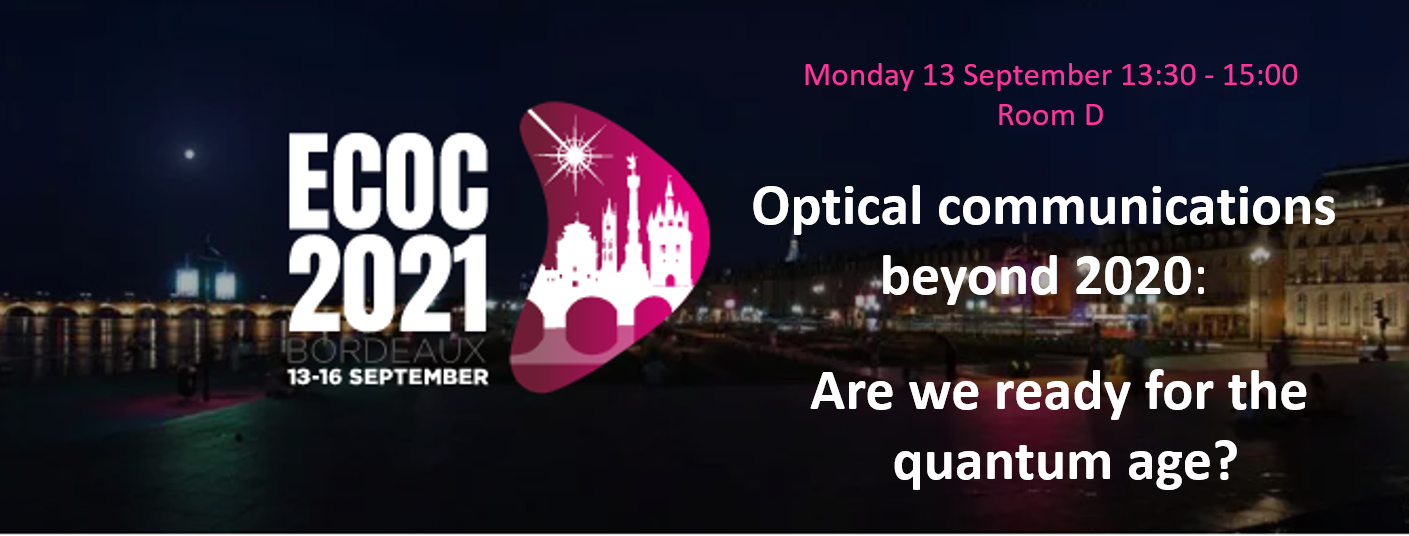Title
A Quantum Key Distribution simulator for BB84-type protocols with decoy states
Authors
Florian Prawits, Christoph Pacher and Hannes Hübel
Abstract
BB84-type DV-QKD protocols that implement weak coherent laser pulses as the carrier for the encoded information are severely limited in their maximally achievable transmission distance due to the inherent threat of photon number splitting (PNS) attacks. This potential weakness can be elegantly eliminated by the adaption of the protocol to include so-called decoy states (DS) in the transmission. These decoy states allow Alice and Bob to probe their transmission channel and statistically infer whether a PNS type attack is occurring, thus precluding Eve from successfully using this strategy. The added degrees of freedom of deciding how often to send decoy states and which intensities to use for them however further complicates the already complex task of predicting the impact on protocol performance and finding a set of suitable parameters to achieve optimal secret key rates (skr). In order to predict optimal performance, as a function of characteristics of the QKD setup like channel losses and device imperfections, state preparation fidelity, decoy state parameters and finite size effects, the software simulator pyDSsim has been developed. The tool is written in Python and implements the recent security proof framework introduced in [1,2]. The software can be scripted from the command line or used via a graphical user interface (GUI: QT5 framework) for easy exploration via parametrized x-y plots of over 40 different variables, allowing a comprehensive evaluation of their interdependencies. The main feature however is the option to numerically compute the set of protocol variables for a given QKD-setup which maximizes the secret key rate under constraints typical for practical implementations: fixed block sizes or fixed acquisition times for the raw key. To this end two different algorithms (differential-evolution [3] and L-BFGS-B [4]) are utilized, allowing for a cross-check of the acquired results and choice between speed and accuracy of the approach.
References [1] Rusca, D., Boaron, A., Grünenfelder, F., Martin, A. & Zbinden, H. Finite-key analysis on the 1-decoy state QKD protocol. Appl. Phys. Lett. 112, 171104 (2018) [2] Lim, C. C. W., Curty, M., Walenta, N., Xu, F. & Zbinden, H. Concise security bounds for practical decoy-state quantum key distribution. Phys. Rev. A 89, 022307 (2014) [3] R. H. Byrd, P. Lu and J. Nocedal. A Limited Memory Algorithm for Bound Constrained Optimization, (1995), SIAM Journal on Scientific and Statistical Computing, 16, 5, pp. 1190-1208. [4] Storn, R and Price, K, Differential Evolution – a Simple and Efficient Heuristic for Global Optimization over Continuous Spaces, Journal of Global Optimization, 1997, 11, 341 – 359.
Venue
QCrypt 2021 (https://2021.qcrypt.net/)
Place and Date
Online, 23 – 27 August 2021
[Download]

 We are delighted to announce that UNIQORN will organise together with OPENQKD Project the “Optical communications beyond 2020: Are we ready for the quantum age? workshop at ECOC 2021 in Bordeau, France!
We are delighted to announce that UNIQORN will organise together with OPENQKD Project the “Optical communications beyond 2020: Are we ready for the quantum age? workshop at ECOC 2021 in Bordeau, France!